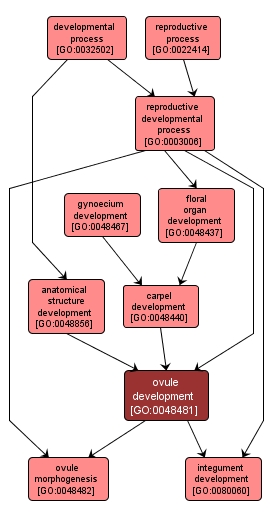| Desc: |
The process whose specific outcome is the progression of the ovule over time, from its formation to the mature structure. The ovule is the structure in seed plants enclosing the female gametophyte, and is composed of the nucellus, one or two integuments, and the funiculus; it develops into the seed. |














